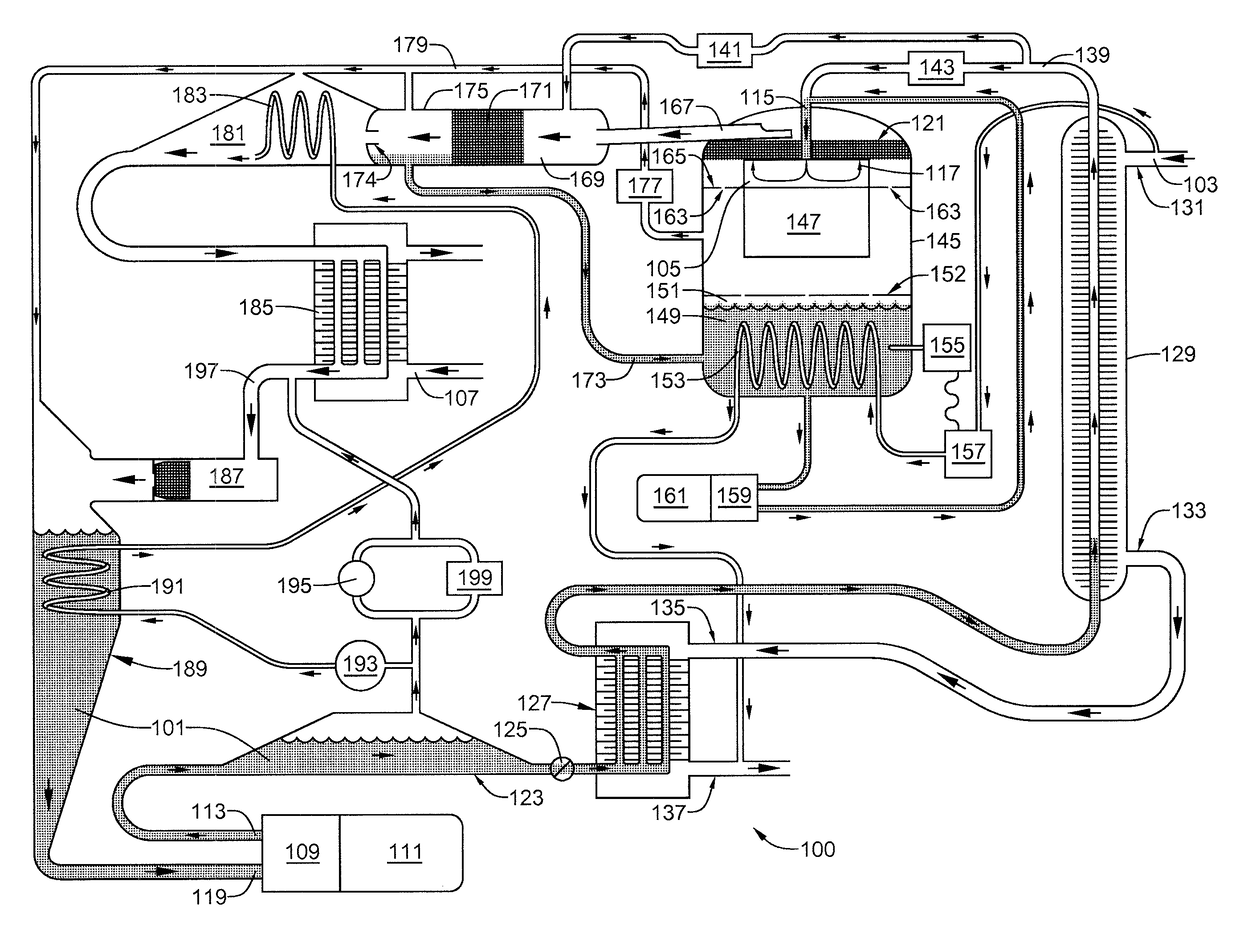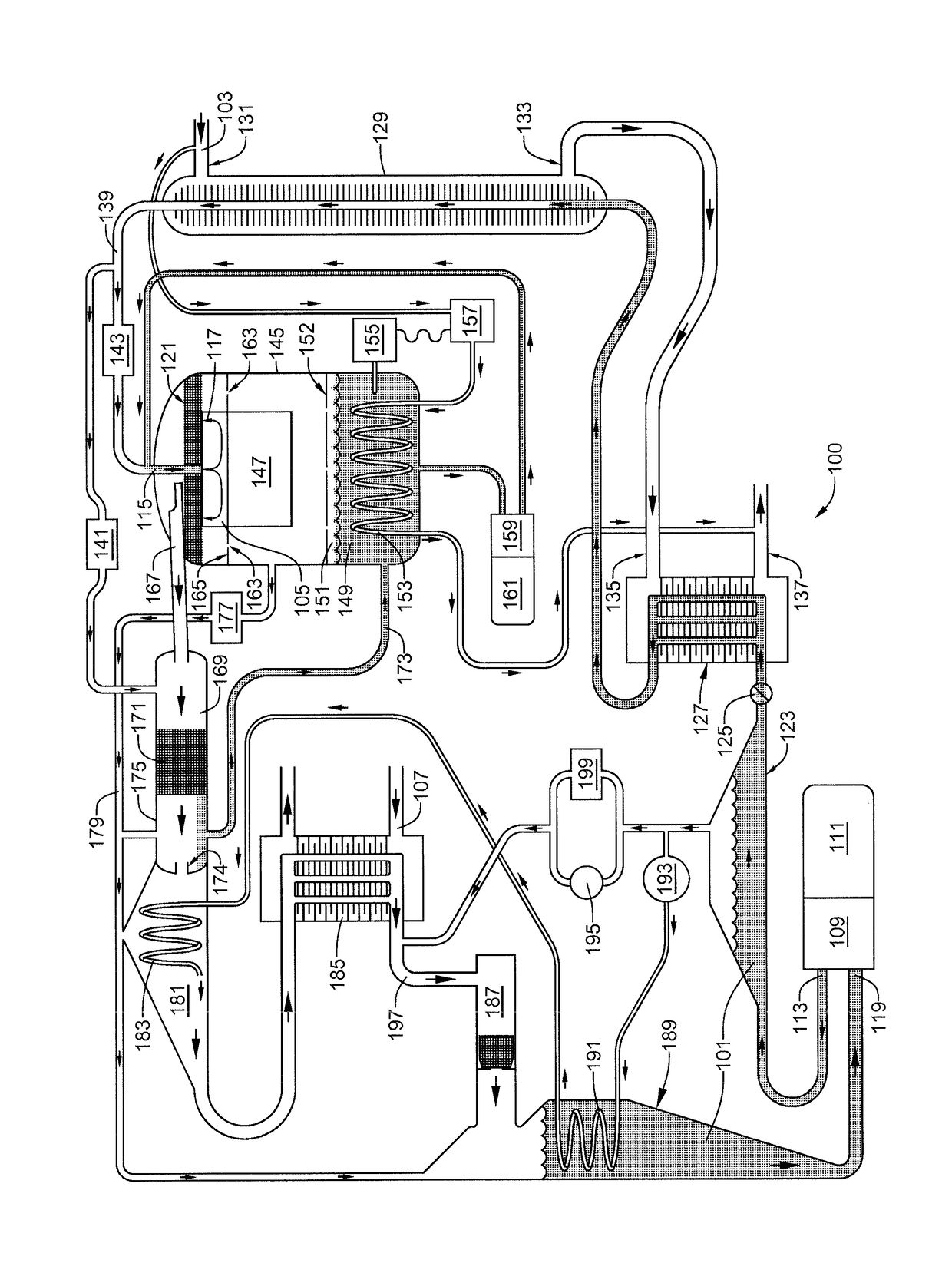Organic rankine cycle decompression heat engine
a heat engine and rankine cycle technology, applied in steam engine plants, machines/engines, mechanical equipment, etc., can solve the problems of largely ignored, achieve high mass flow requirements, reduce energy consumption, and reduce energy consumption
- Summary
- Abstract
- Description
- Claims
- Application Information
AI Technical Summary
Benefits of technology
Problems solved by technology
Method used
Image
Examples
Embodiment Construction
[0034]The present application has priority dates that are based on the filing of three separate provisional patent applications. The first, application Ser. No. 61 / 761,115, has a filing date of 5 Feb. 2013 and is titled HEAT ENGINE DECOMPRESSION CYCLE. The second, application Ser. No. 61 / 817,862, has a filing date of 30 Apr. 2013 and is titled HIGH-PRESSURE VAPOR ENHANCER. The third, application Ser. No. 61 / 841,610, has a filing date of 1 Jul. 2013 and is titled SCROLL DRIVER ACCELERATOR SYSTEM. All three of these provisional patent applications are hereby fully incorporated herein, in their entireties, by this reference.
[0035]The invention will now be described with reference to FIG. 1, which shows the ordered arrangement of equipment required to implement the improved organic Rankine cycle decompression heat engine 100. The improved heat engine 100, which employs a highly specialized organic Rankine cycle, provides a sealed, closed-loop path for an organic refrigerant 101 having a...
PUM
 Login to View More
Login to View More Abstract
Description
Claims
Application Information
 Login to View More
Login to View More - R&D
- Intellectual Property
- Life Sciences
- Materials
- Tech Scout
- Unparalleled Data Quality
- Higher Quality Content
- 60% Fewer Hallucinations
Browse by: Latest US Patents, China's latest patents, Technical Efficacy Thesaurus, Application Domain, Technology Topic, Popular Technical Reports.
© 2025 PatSnap. All rights reserved.Legal|Privacy policy|Modern Slavery Act Transparency Statement|Sitemap|About US| Contact US: help@patsnap.com


